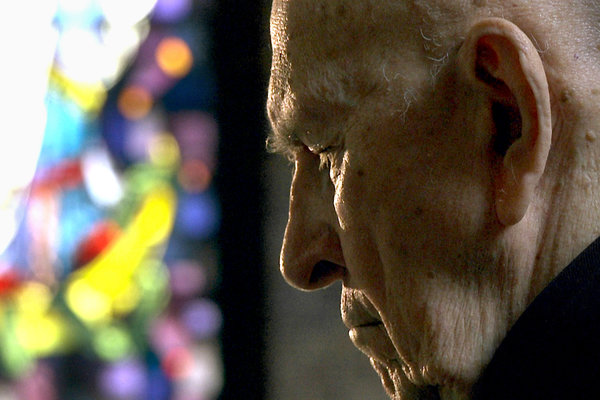
“I think he would be smiling. That twinkle in Thomas’ eye would be twinkling. I think he would just be thrilled to see people continuing to come together in friendship, continuing to carry the contemplative legacy, continuing to carry the inter-spiritual legacy onward. This is what he gave his life for. This was his whole life, and it’s had such an impact on the world.” - Matthew Wright, Episcopalian priest; quoted in Aspen Daily News, July 2019
Father Thomas Keating, O.C.S.O., was born March 7, 1923, and died on October 25, 2018. He entered the Order of Cistercians of the Strict Observance in 1944. In 1958 he was appointed Superior of St Benedict’s Abbey in Snowmass, Colorado, two years after the abbey had been founded. He was elected abbot of St. Joseph’s Abbey, Spencer Massachusetts, in 1961 and served for 20 years until he retired and moved back to St. Benedict’s Abbey in Snowmass.
During his time at St. Joseph’s Abbey, in 1975, he and two other Trappist monks, William Meninger and Basil Pennington, developed centering prayer, a contemporary form of contemplative prayer, based on the 14th century spiritual classic The Cloud of Unknowing. The three worked with practitioners of other traditions, including Zen master Joshu Roski Sasaki, and a former Trappist, Paul Marechal, who taught Transcendental Meditation. Keating was especially disappointed that so many Catholics were leaving the church to seek out Eastern religions, which offered contemplative practices that cultivated the inner peace and spiritual union that they desired. So, he resurrected the Christian tradition of contemplative prayer in a form that was accessible to people to inspire them to return to their Christian roots.
This form of prayer was originally referred to as the “Prayer of the Cloud” until Pennington conducted the first retreat to a lay audience in Connecticut, where participants suggested the name “centering prayer” based on a term Thomas Merton had used in Seven Storey Mountain. Merton wrote, in part: "You rest in [God] and He hears you with His secret wisdom." Keating, Meninger and Pennington began teaching others the practice so they could lead centering prayer groups.
When Father Keating came out to Snowmass in 1981, he began conducting talks on prayer at a local parish in Aspen, CO. He also offered retreats. The prayer was well-received, and its practice began to grow. Soon, people began to realize the fruits of practicing centering prayer twice a day. In 1984, in New York City, Gus Reninger, Ed Bednar and Father Keating created a network of these centering prayer communities called Contemplative Outreach, Ltd. Today there are at least 65 Contemplative Outreach chapters within the United States, and 15 internationally.
In his last interview with Ken Wilber, Father Keating estimated that over seven million people, most of whom don’t speak English, practice centering prayer.